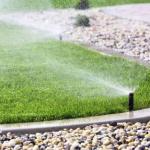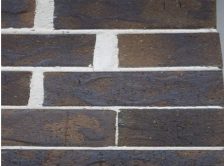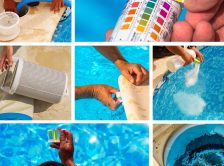
Outdoor Water Saving Tips
By HOUSPECT Building and Pest Inspections|September 27, 2018
With drought conditions always, a concern for Australian homeowners when the weather gets hotter, saving water is on everyone’s mind. If you are one of the many homeowners worried about saving water in South Australia, these ten outside water saving tips will help ease your mind during the spring and summer months.
- Install a drip or soak system – Watering efficiently is one of the best ways to save water in Southern Australia. Using a system that automatically regulates how much water is used and where is a good place to start. A drip soak system helps to conserve water while ensuring that your lawn and plants get the water that they need.
- Drought resistant lawn – A drought resistant lawn can be trained to use less water. By doing so, roots are encouraged to grow deeper. Avoid mowing your lawn during the summer or adjust the machine to cut the blades of your grass longer. The additional shade will help slow down evaporation so that most of the water you use will feed the lawn and soil.
- Use mulch – Using mulch is a great way to slow down evaporation and ensure that water gets to the places where it is most needed. Mulch is also known to smother certain weeds. It is important to check with the Rural Fire Service if you live in a high risk area for bush fires when using mulch to learn about best practice.
- Avoid windy weather – Watering in windy weather is never a good idea but it is especially wasteful during the summer. Most of the water will not reach its intended target; leaving some areas overwatered, others dry – and that’s all before evaporation plays its part.
- Plant native plants – You can check with local nurseries for recommendations on which plants are best for the area. The Australian Plant Society and State Flora are also great resources for learning about what plants are native to your area and will thrive in the summer weather relying on less water.
- Watering zones – Watering zones is a practice of effectively grouping plants together that require similar amounts of water. You can then better control how much water you are using in each area. The practice is known as hydro-zoning.
- Washing your car – If you are not concerned about tire tracks on your lawn for a day or two, parking the car on the lawn while you wash it will help to reduce water waste. Washing the car in a parking bay or the garage will only result in most of the water running into the stormwater drain which is a huge waste of resources.
- Waterproof terracotta pots – If you are using terracotta pots for plants, you are wasting water unnecessarily when it comes to watering. These pots are porous which results in water leaking out at an alarming rate when you can’t afford to waste your resources. Make sure to waterproof your terracotta pots with a suitable membrane before using them for planting. Alternatively, you can paint them in a waterproof seal.
- Cover your pool – Pool water will evaporate quickly if the pool is not covered during the late spring and summer months. Use proper pool covers as they are typically designed to help keep the pool clean as well as reducing evaporation.
- Cleaning paved areas – Use garden tools and a broom to clean paved areas rather than getting the hose out. There really isn’t much difference in labour and you will save gallons of water by taking the hose out of the equation.



